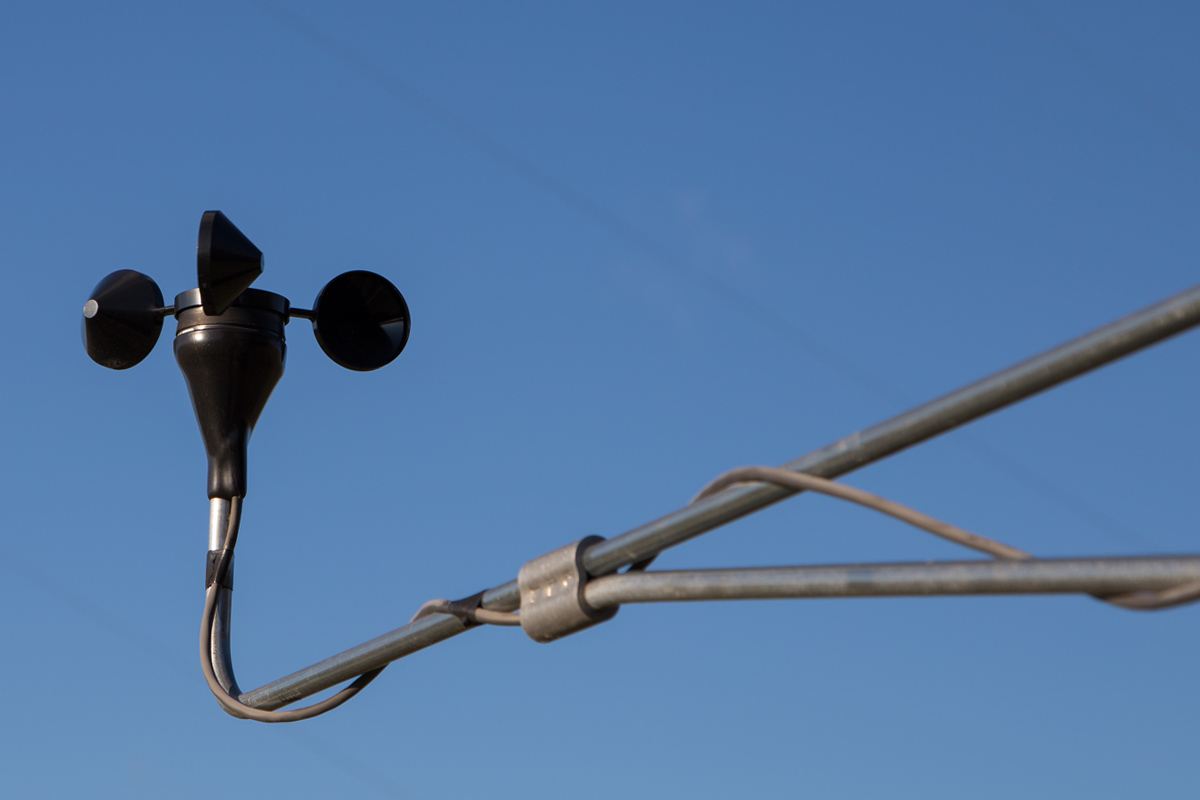Expert Tips for Calibrating Your Anemometer for Optimal Efficiency
Expert Tips for Calibrating Your Anemometer for Optimal Efficiency
Blog Article
All You Required to Find Out About Anemometers: Exactly How They Work, Why They Issue, and Where to Utilize Them
Anemometers, though often neglected in the realm of scientific tools, play an essential duty in various fields, using beneficial insights into wind speed and air flow patterns. As we dive right into the intricacies of anemometer innovation, we will certainly reveal the internal functions of these gadgets, their significance, and the crucial factors to consider when choosing the right anemometer for certain applications.

Anemometer Essentials
A vital tool utilized to determine wind speed and direction, the anemometer plays an essential role in weather forecasting and numerous sectors. An anemometer commonly is composed of three or four mugs that turn in the wind, a vane that directs into the wind, and sensing units to track the movements or turnings. By computing the rotations or movements over a details amount of time, the anemometer can figure out wind speed. The vane aids figure out wind direction by aiming right into the wind, offering valuable information for weather condition forecasting, aeronautics, maritime procedures, environmental tracking, and wind energy applications.
There are different kinds of anemometers readily available, including mug anemometers, vane anemometers, hot-wire anemometers, and sonic anemometers, each with its one-of-a-kind attributes and applications. Mug anemometers are frequently used for basic wind rate dimensions, while vane anemometers are preferred for directional dimensions. Hot-wire anemometers are appropriate for low airspeeds, and sonic anemometers are ideal for high-precision dimensions in research and commercial setups. Comprehending the essentials of anemometers is important for exact wind information collection and analysis across various sectors.
Principles of Anemometer Procedure
Building on the foundational understanding of anemometer essentials, the principles of anemometer procedure clarify the mechanics behind wind speed and instructions dimensions. Mug anemometers, for instance, have three or even more cups that record the wind, triggering them to spin much faster as the wind rate rises. Hot-wire anemometers rely on a heated cord that cools down as wind passes over it, with the rate of cooling down figuring out the wind speed.
Value of Anemometers
Anemometers play an essential duty in measuring wind speed and direction, supplying necessary data for weather forecasting, environment research studies, see here now environmental tracking, and aviation operations. Meteorologists count on anemometers to gather precise wind data, assisting them understand weather patterns, anticipate tornados, and issue timely cautions to the public. Wind ranch drivers utilize anemometers to examine wind conditions and make the most of power manufacturing from wind turbines.
Applications Throughout Various Industries
In the eco-friendly power sector, anemometers play a crucial function in assessing wind conditions for wind farm positionings, making certain optimum power production. Industries like construction and mining make use of anemometers to keep track of wind rates, critical for security protocols, specifically when working at elevations or in open-pit mines Website where solid winds can pose risks. In farming, anemometers aid farmers in taking care of crop splashing by supplying real-time information on wind rate to avoid drift.

Choosing the Right Anemometer for Your Demands
For basic objectives, a cup anemometer is appropriate for determining wind rate, while a vane anemometer offers wind direction data. Hot-wire anemometers are ideal for reduced airspeed dimensions, and ultrasonic anemometers provide high accuracy and resilience.

Conclusion
In conclusion, anemometers play an essential role in gauging wind speed and direction across numerous sectors. It is essential to consider the relevance of anemometers in order to make enlightened choices when selecting the most ideal gadget for gauging wind problems.
There are numerous types of anemometers readily available, including mug anemometers, vane anemometers, hot-wire anemometers, and sonic anemometers, each with its one-of-a-kind features and applications. Mug anemometers are frequently made use of for fundamental wind rate dimensions, while vane anemometers are liked for directional measurements. Hot-wire anemometers are ideal for reduced airspeeds, and sonic anemometers are suitable for high-precision measurements in study and industrial setups.Building on the fundamental understanding of anemometer essentials, the principles of anemometer procedure illuminate the mechanics behind wind speed and instructions dimensions. For general functions, a mug anemometer is appropriate for gauging wind speed, while a vane anemometer supplies wind instructions data.
Report this page